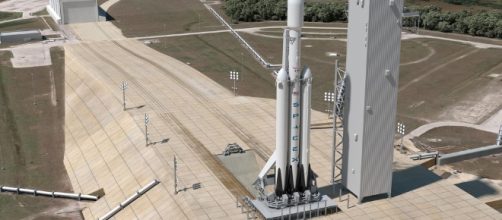Several years ago, an argument raged in space policy circles over the best approach to deep space exploration. One side pushed for an architecture based on Heavy Lift rockets, similar to the Saturn V that took men to the moon. People could go back to the moon and then on to Mars with fewer launches of a big rocket. The other side decried the great expense of developing and then operating a heavy lift rocket. Instead, they proposed using existing, commercially available rockets to fill orbital depots with rocket fuel. Then a ship going to the moon or Mars would dock with the depot and top off with fuel before proceeding on.
The problem with orbital fuel depots
Orbital fuel depots came with a number of technological challenges. How does one store cryogenic propellant in space for extended period of times? Also, a NASA study conducted several years ago determined that while the orbital fuel depot was doable, low flight rates of existing launchers limited the number of missions one could mount to deep space.
Commercial heavy lift vs. NASA heavy lift
The development that has really killed the idea of orbital fuel depots has been the development of commercial heavy lift. SpaceX’s long awaited Falcon Heavy is finally slated to launch in November 2017. According to Popular Mechanics, it is a technological marvel. The Falcon Heavy consists of a modified Falcon 9 core and two Falcon 9 strap on boosters.
27 rocket engines will be expected to fire in tandem, a feature that has many aerospace engineers feeling nervous.
The real technological innovation of the Falcon Heavy is that incorporates the reusability functions that have started to work so well with the Falcon 9. The two strap on boosters, once they finish firing, will detach and fly back to the launch site, landing on land.
The first stage of the core rocket will land on a drone ship off shore of the launch pad. The hardware can then be refurbished and used again.
With the similarly reusable New Glenn and then even more powerful New Armstrong rockets coming from Blue Origin, the era of commercial heavy lift is drawing nigh. The argument, therefore, has shifted to one pitting the cheaper, easier to operate commercial heavy lifters to the more expensive NASA sponsored Space Launch System.
For various reasons, only partly having to do with politics, the argument will likely be resolved by “all of the above.”
The rebirth of the space based fuel depot
This is not to say that the idea of space based refueling is entirely dead. However, recent discoveries of water on the moon have shifted the location of such depots from Earth orbit to the moon. Water can be refined into rocket fuel and then shipped to cis-lunar space to top off spacecraft headed for deep space. The fuel does not have to be launched from inside Earth’s heavier, more challenging gravity field, but rather made in situ on the moon.


